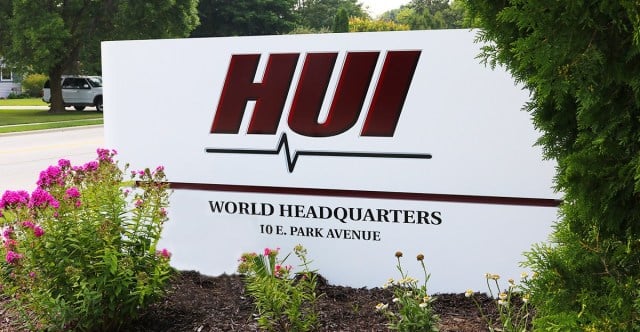How does powder-coated paint work?
Powder-coating is an advanced yet simple way of spray painting a very fine dry, plastic powder paint material. The finely ground particles of pigment and resin are electrostatically charged and sprayed onto a metal part. The coating process involves applying the powder with a manual gun, an automatic gun system or both.
Finishing engineers have turned to powder coating as a way to produce a high-quality finish while increasing production, cutting costs and complying with ever-changing environmental restrictions. Engineers have also proven that powder is a stronger paint. Many standard tests in the industry include an impact test, a mandrel bend test, a marring test and UV test, all of which result in favoring powder over wet paint.
From an economical standpoint, the costs of using a powder-coating system are more cost effective than a wet paint system. With no solvent in powder coating, the exhaust required in the ovens is lower, saving energy and cost in spite of the higher curing temperatures (400 degrees Fahrenheit) that powder coating requires. The labor costs are also cheaper in regards to training time because we don’t have to mix the powder with solvents or catalysts.
Powder does not require a primer, and there are no runs or drips like with wet paint. If there is a mistake, the powder can be blown off the part with a low-pressure safety nozzle before the part goes into the oven. This lowers the chance and costs of rework. The appropriate application equipment, powder materials and efficient recovery methods that one-coat application and overall powder utilization have an efficiency of 95 percent to 98 percent. If more than one color is required, color changes can be accomplished in a relatively short period. Up to 99 percent of the powder is sprayed on the product surface, but if it does not adhere to the part, it can be recovered and reused (reclaiming), resulting in minimal waste disposal costs.
Want to learn more about our powder-coat painting and finishing processes? Check out our blog!
What does ISO certified mean?
ISO 9001:2015
An International Standardizations Organization (ISO) 9001 certification signifies that a company has passed a series of specific requirements regarding quality management. This certification proves our company’s ability to consistently provide excellent service to our customers. HUI undergoes consistent ISO audits in order to maintain this certification and keep all procedures up to date.
ISO 13485:2016
Similar to an ISO 9001, the ISO 13485 certification relates to the quality of medical products and devices. The ISO 13485:2016 strives to set a consistent, high standard of quality among medical device regulatory requirements. Due to its specific regulatory requirements, ISO 138485 both includes and excludes requirements implemented by ISO 9001.
What does “PPM” stand for?
PPM, otherwise known as “parts per million,” signifies how many rejected pieces a company ships in comparison to the total number of pieces shipped over a given time period. A company that operates at 1,000 external PPM or less rejects 1,000 pieces or less out of every 1 million pieces shipped. PPM can be a subjective measurement depending on the industry and the products a company produces.
A company that has an automated line—one that produces the same product every day—should have a significantly lower PPM than a company that produces small, custom run quantities. So, how does HUI fit into this? HUI produces complex weldments with small run quantities. Therefore, the defect opportunities are relatively high, but HUI steadfastly maintains and performs below 1,000 PPM.
 HUI dedicates itself to helping our customers design the solutions they need and launching quality products on time and within budget.
HUI dedicates itself to helping our customers design the solutions they need and launching quality products on time and within budget.